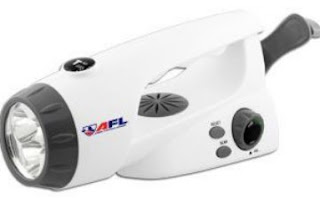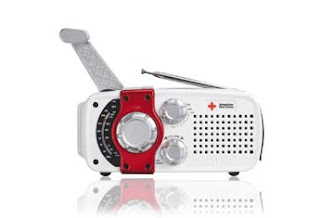Interesting article from Jim McKay at Emergency Management
"Sandy Created a Black Hole of Communication", especially on the absence of certain "self-help" organizations that might have been useful in the pre-disaster hours:
 |
| Adam DuBrowa/ FEMA |
The lessons from Sandy have been repeated over and over: Communities should be prepared to be self-sufficient for close to 10 days. That means having food, water, batteries and flashlights, among other things. Batteries were especially important during Sandy or perhaps more importantly, ways to charge them.
The challenges of Sandy emphasized the need for community leaders to become informed about how their communities can help themselves during disasters. Questions about to what degree local, state and federal agencies are responsible immediately following a disaster and which agencies or levels of government were responsible for certain services was a source of confusion for some communities.
****
She said that although the community understands what a nor’easter is, many residents were still at home waiting for a knock on the door. “You’re looking at a community that, from what I could see, didn’t have a strong CERT [Community Emergency Response Team],” Thompson said. “There was no FEMA, no Red Cross, no [Voluntary Organizations Active in Disaster], no CERT. I don’t know who they thought was coming.”
****
.... “The public has a general misconception of what FEMA does,” she said. “They believe FEMA is going to come in and help in a physical way. And they don’t recognize the responsibility of the local and state [agencies] as far as who provides things.”
 |
| Under $10 radio |
There's a lot of stuff in the article, but one of the keys is that people need to have radios (talking AM and FM type) that can be powered by cranking and/or solar cells. I have suggested before that a priority ought to be placed on getting small radios out to the afflicted area as soon as possible after a disaster - see
"Radios for Peace" and
Great minds and Communications.
The local government or the state or, as a last resort, the federal government needs to set up a broadcast channel to get useful information out to the areas affected, with translators for those communities that lack English skills (the acquisition of which really ought to be encouraged amongst our population).
 |
| Under $20 radio |
For information about CERT, see
here. People who are used to being catered to by their government are always in trouble with the fan gets hit.
“The preparedness materials say you should have batteries and radios, but when we arrived seven days after the storm struck, those batteries are dead,” Thompson said. Preparing for three to five days is old, and “educated” people say be prepared to be self-sufficient for 10 days," Thompson said.
 |
| Under $2 radio |
Self-powered radios can be inexpensive - here's one from Radio Shack for $19.97
American Red Cross Microlink FR170 Emergency Radio and a place where you can buy a radio-flashlight combo for
under $10 in bulk.
Further, if you really want to go cheap - there are these
ear-bud, 2 AAA battery FM radios (with light, too!) for under $2 in bulk. I got one of those once as a gift from an organization for which I do some work on occasion. It worked fine. In fact, several year later, it still works when I remember to put in batteries. And those are "retail" prices, too, so I suspect there are even cheaper paths to follow.





I remember when radios sold in the US had the CONELRAD frequency marked on the tuner dial. Seems it was a good idea, after all, as demonstrated in the major weather related disasters over the last 20 years, or so.
ReplyDelete